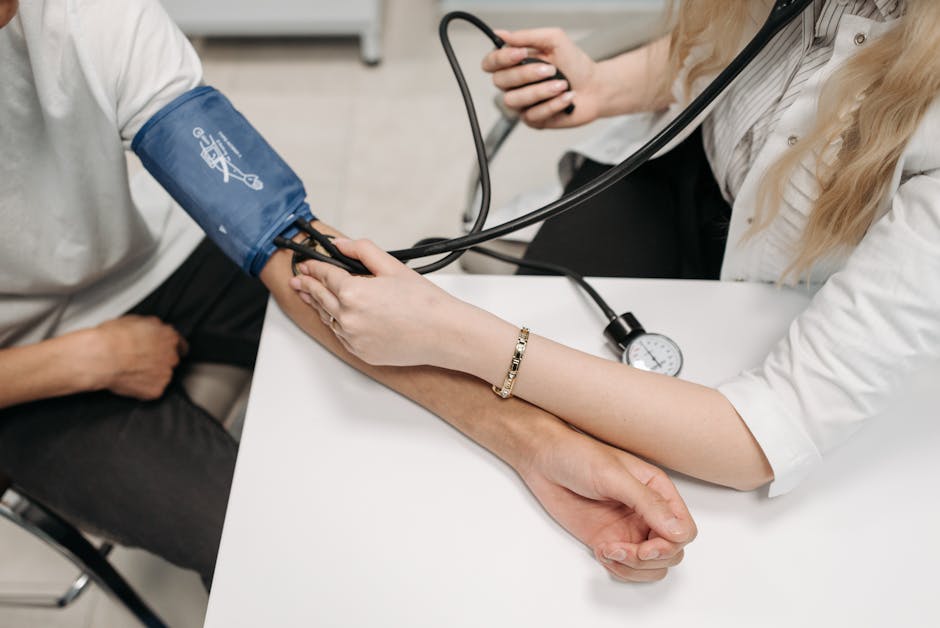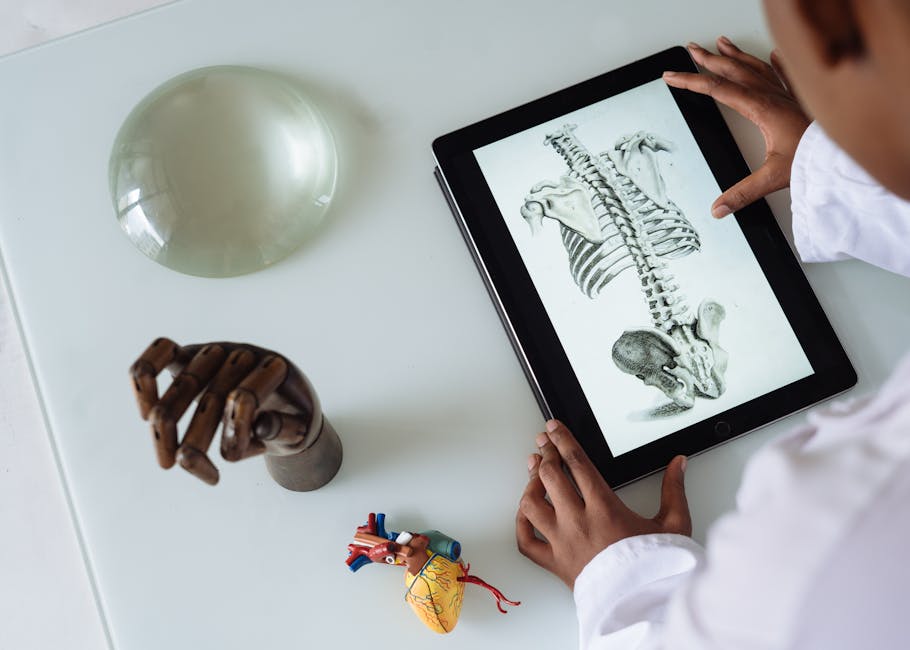How Iot Is Transforming Healthcare
You’re about to experience a healthcare revolution, where IoT technology is transforming the way you interact with doctors, track your health, and receive care. With remote patient monitoring, you’ll get personalised treatment plans, real-time tracking of crucial signs, and empowered patient education. Wearable devices and health tracking enable you to take control of your wellness, while IoT-enabled telemedicine platforms connect you with specialists instantly. And with real-time data analytics, healthcare providers can respond faster, reducing errors and wait times. Buckle up, because the future of healthcare is here – and it’s just getting started.
Key Takeaways
• IoT enables remote patient monitoring, tracking vital signs, and health metrics in real-time, improving health outcomes and reducing hospital readmissions.• Wearable devices and health tracking provide personalised coaching, real-time vital sign tracking, and data-driven insights for informed health decisions.• IoT-enabled telemedicine and data analytics revolutionise remote healthcare, providing virtual consultations, personalised treatment plans, and real-time data analysis.• IoT improves patient outcomes by enabling proactive care, reducing errors and wait times, and enhancing patient engagement through real-time data and personalised treatment plans.• IoT transforms healthcare by providing critical patient data in real-time, enabling predictive modelling, and identifying high-risk patients to anticipate potential complications.
Remote Patient Monitoring Systems

Remote patient monitoring systems are the superheroes that keep patients safe and healthy from afar. These systems allow healthcare providers to keep tabs on patients remotely, ensuring they’re sticking to their treatment plans.
But seriously, remote patient monitoring systems are a game-changer for medical compliance. They enable healthcare providers to track essential signs, medication adherence, and other health metrics in real-time, which means they can catch any potential issues before they become major problems.
Patient education is also a major beneficiary of remote patient monitoring systems. By providing patients with access to their own health data, they’re empowered to take a more active role in their care. It’s essential for better health outcomes, and remote patient monitoring systems make it easier for patients to understand their conditions and take control of their care.
In short, remote patient monitoring systems are the ultimate superheroes of healthcare. They’re the ultimate solution for medical compliance, patient education, and overall better health outcomes.
Smart Medical Devices in Action

You’re probably already tracking your daily steps and sleep patterns with a wearable device, but did you know that smart medical devices can do so much more?
They’re not just fancy fitness trackers – they’re changing the game for remote patient monitoring and giving healthcare providers real-time insights into patients’ conditions.
Get ready to explore the cutting-edge tech that’s revolutionising healthcare, one connected device at a time.
Remote Patient Monitoring
As you navigate the healthcare landscape, remote patient monitoring emerges as a beacon of hope, harnessing the power of smart medical devices to redefine the boundaries of care. This innovative approach allows healthcare providers to keep a watchful eye on patients from the comfort of their own homes, reducing hospital readmissions and improving health outcomes. But, with great power comes great responsibility – medical ethics and patient autonomy must be respected.
| Device | Functionality | Benefits |
|---|---|---|
| Blood Glucose Monitors | Track blood sugar levels | Real-time insights for timely interventions |
| ECG Wearables | Monitor heart rhythms | Early detection of cardiac anomalies |
| Pulse Oximeters | Measure oxygen saturation | Swift response to respiratory distress |
Wearable Health Trackers
Wearable health trackers, the ultimate BFFs of the health-conscious, take remote patient monitoring to the next level by tracking your every move, beat, and breath.
These tiny devices have become an essential accessory for fitness enthusiasts and health freaks alike. With fitness tracking, you can monitor your daily activity, from steps taken to calories burned.
You can even compete with friends (or foes) to see who can log the most exercise hours. But that’s not all – these trackers also keep tabs on your sleep monitoring, ensuring you’re getting those essential Z’s to recharge for the next day’s gym session.
The real magic happens when you synch your tracker with your phone or computer, giving you a detailed breakdown of your daily habits.
You’ll be amazed at how a simple wristband can provide insights into your habits, helping you make data-driven decisions to improve your overall well-being. And the best part? You don’t need to be a health expert to understand the data – the trackers do the heavy lifting for you.
IoT-Enabled Telemedicine Platforms

With telemedicine platforms getting a high-tech makeover, IoT-enabled systems are revolutionising remote healthcare by letting patients consult specialists from the comfort of their pyjamas. You no longer need to wait in line for hours or travel long distances to see a doctor. Virtual consultations are now a reality, thanks to IoT-enabled telemedicine platforms.
These platforms use advanced sensors, high-speed internet, and AI-powered algorithms to connect you with healthcare professionals in real-time.
Imagine having a medical chatbot assist you in scheduling an appointment, answering your medical queries, and even providing basic medical advice. IoT-enabled telemedicine platforms make this possible.
These platforms use machine learning algorithms to analyse your medical history, diagnose your condition, and provide personalised treatment plans. You can even upload your medical records, lab results, and medication lists to the platform, making it easier for healthcare professionals to access your medical history.
The best part? IoT-enabled telemedicine platforms reduce healthcare costs, increase accessibility, and provide better patient outcomes.
You can access specialist care from anywhere, at any time, without having to worry about long wait times or travel costs. And, with IoT-enabled devices, you can even monitor your crucial signs remotely, allowing healthcare professionals to respond quickly in case of an emergency.
The future of healthcare is here, and it’s virtual.
Wearable Devices for Health Tracking

You’re probably no stranger to wearables, but did you know they’re more than just stylish accessories?
With IoT-enabled wearables, you can track your biometrics in real-time, gain data-driven insights into your health, and even receive personalised coaching to get you in top shape.
Get ready to take control of your wellness journey like never before!
Data-Driven Health Insights
Your daily step count, sleep patterns, and heart rate are being tracked by that sleek device on your wrist, silently gathering data that could potentially redraw the boundaries of healthcare.
It’s not just about bragging rights on social media; this data is a treasure trove for medical research and health informatics.
Researchers are using your data to identify patterns and correlations that can inform medical research, leading to breakthroughs in disease diagnosis and treatment.
Health informatics experts are working to standardise and integrate this data into electronic health records, enabling doctors to make more informed decisions.
This data is helping to identify high-risk patients and prevent hospital readmissions.
It’s also enabling personalised medicine, where treatment plans are tailored to your unique genetic profile and lifestyle.
And, of course, it’s helping you take control of your own health, making you more aware of your habits and motivations.
The possibilities are endless, and it’s exciting to think about the impact this data can have on the future of healthcare.
Real-Time Vital Sign Tracking
About 80% of americans own a smartphone, and a sizeable chunk of them are already tracking their essential signs in real-time, thanks to the proliferation of wearable devices that can monitor everything from heart rate to blood oxygen levels.
You’re probably one of them, proudly sporting a fitness tracker on your wrist, aren’t you?
These wearable devices are generating a treasure trove of essential sign analytics, which can be aggregated and analysed in medical data lakes.
This real-time tracking enables you to identify patterns, detect anomalies, and receive personalised alerts when something’s off.
It’s like having a personal health coach, minus the nagging.
With IoT-enabled wearables, you’re empowered to take control of your health, making data-driven decisions to improve your well-being.
So, go ahead, strap on that fitness tracker, and let the IoT do the rest.
Your health (and your smartphone) will thank you.
Personalised Wellness Coaching
By strapping on a wearable device, you’ve basically hired a personal wellness coach that’s always on the clock, tracking your daily habits and providing personalised guidance to help you kick those unhealthy habits to the kerb.
With wearable devices, you can track your daily calorie intake and get personalised nutrition advice for a more mindful approach to eating.
Monitor your sleep patterns and receive tailored tips to improve the quality of your rest.
Get real-time feedback on your physical activity levels and set achievable fitness goals.
Stay on top of your stress levels with heart rate monitoring and guided relaxation techniques.
Receive holistic wellness advice, taking into account your mental, emotional, and physical well-being.
These devices are like having a personal trainer, nutritionist, and therapist all rolled into one.
They help you develop healthy habits, breaking them down into manageable chunks, and providing ongoing support to help you stay the course.
It’s like having your own personal wellness coach, minus the hefty price tag and judgemental stares.
Real-Time Data Analytics Advantage

Harnessing the power of real-time data analytics, healthcare professionals can now respond to medical emergencies with lightning-fast reflexes, saving precious minutes that can mean the difference between life and death.
You’re probably thinking, ‘Wait, didn’t we used to have to wait for hours, even days, to get lab results?’ Yeah, those were the dark ages. With IoT-enabled devices and real-time data analytics, healthcare pros can now access critical patient data in real-time, making life-or-death decisions a whole lot easier.
Predictive modelling takes centre stage here, allowing healthcare teams to identify high-risk patients and anticipate potential complications before they arise. It’s like having a crystal ball, minus the mystical nonsense.
With real-time data, healthcare transparency becomes the norm, and you, as a patient, get to enjoy a level of care that’s tailored to your unique needs. No more cooky-cutter treatment plans or guesswork. Your healthcare team can now make data-driven decisions, ensuring you receive the most effective, personalised care possible.
The beauty of real-time data analytics lies in its ability to simplify complex healthcare data, making it easier to identify patterns, trends, and correlations.
This means healthcare pros can pinpoint areas for improvement, optimise resources, and allocate them more efficiently. It’s a game-changer, folks. With real-time data analytics, the healthcare industry is finally catching up with the 21st century.
Enhanced Patient Care Outcomes

With real-time data analytics helping healthcare pros make lightning-fast decisions, you’re more likely to receive exceptional care that’s tailored to your unique needs, and that’s exactly what leads to enhanced patient care outcomes. It’s like having a superhero cape wrapped around your hospital bed – you’re getting the best care possible, and that’s a pretty amazing feeling.
Personalised treatment: With real-time data, doctors can create customised treatment plans that cater to your specific needs. No more one-size-fits-all approach!
Clinical efficiency: IoT streamlines clinical workflows, reducing errors and wait times. You get in, you get treated, you get out – it’s a beautiful thing!
Proactive care: IoT sensors and wearables can detect potential health issues before they become serious problems. It’s like having a guardian angel watching over your health.
Improved patient engagement: With real-time data, you’re more informed and involved in your care. You’re not just a patient, you’re an active participant in your own health journey!
Better health outcomes: IoT helps reduce readmission rates, hospital-acquired infections, and other complications. You’re more likely to get better, and stay better, thanks to IoT.
Conclusion
As you step into the future of healthcare, imagine a world where doctors monitor your health metrics remotely, medical devices talk to each other, and telemedicine platforms bring care to your doorstep.
Wearable devices track your every move, and real-time data analytics help doctors make informed decisions.
The result? Enhanced patient care outcomes that revolutionise the way you receive medical attention.
With IoT, the future of healthcare isn’t just promising – it’s already here, and it’s about to change your life.
Contact us to discuss our services now!
